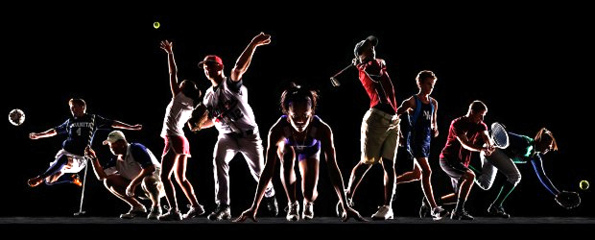Improving and Enhancing Athletic Performance

Beginning in 1975 the name Upledger became almost synonymous with craniosacral therapy. Osteopathic physician John Upledger set out to extend Dr. Sutherland’s investigative work of the inter‐workings of the cranium and sacral systems. He carried out extensive scientific studies from 1975 to 1983 at Michigan State University, where he served as a clinical researcher and Professor of Biomechanics.
Today, thanks to the efforts of Dr. Upledger and a remarkable team of scientists, craniosacral therapy is widely practiced and renowned for the clarity with which it communicates with the physical, emotional, and psychological aspects of its beneficiaries.
How Does Craniosacral Therapy Work?
Craniosacral Therapy is a gentle, hands-on approach where the practitioner is trained to evaluate the human body’s craniosacral system. This system is made up of the membranes and cerebrospinal fluid that protect and surround the brain and spinal cord. Practitioners do this by “listening” to the craniosacral system, the joints, and their fluids.
These fluids and the craniosacral system can become restricted and imbalanced as a result of training, overtraining, stress, injury, and/or chronic conditions. There are important chemicals in these fluids such as neurotransmitters that impact the nervous system once restrictions and imbalances set in. By using a soft-touch approach (generally no more than 5 grams or approximately the weight of a nickel) in a safe space, such restrictions and imbalances can be alleviated and released thus improving the functioning of the Central Nervous System (CNS) and stimulating the body’s natural healing process to occur.
Understanding the CNS and the Craniosacral System
The restrictions can be detected and corrected by utilizing simple methods of touch. The CST practitioner uses his or her hands with light touch to evaluate the craniosacral system. By gently feeling various locations of the body, the practitioner can test for the ease of motion and rhythm of the cerebrospinal fluid pulsing around the brain and spinal cord. The practitioner then uses soft-touch techniques to release restrictions in any tissues influencing the craniosacral system. By doing so, the environment around the brain and spinal cord begin to normalize thereby enhancing the body’s ability to self-correct and treat a myriad of conditions.
CST can be used by athletes for:
- Recovery days after training
- Chronic neck and back pain
- Orthopedic problems
- Migraine headaches
- Concussion and traumatic brain injury
- Complementing post-operation rehabilitation
- Improve performance
It’s also used as a preventive health measure to improve resistance to disease and boost the immune system.
CST is also effective for other conditions associated pain and dysfunction:
- Motor-coordination impairments
- Colic
- Autism
- Central nervous system disorders
- Alzheimer’s disease and dementia
- Spinal cord injuries
- Scoliosis
- Learning disabilities
- Chronic fatigue
- Emotional difficulties
- Stress and tension-related problems
- Fibromyalgia and other connective-tissue disorders
- Temporomandibular Joint Syndrome (TMJ)
- Neurovascular or immune disorders
- Post-Traumatic Stress Disorder (PTSD)
- Post-surgical dysfunction
- Infant and childhood disorders
- Brain and spinal cord injuries
- ADD/ADHD
*This list is not all-inclusive and/or exhaustive but rather a good general start. It’s not meant to replace proper medical assessment and care by a licensed professional.*
Contraindications for Craniosacral Therapy
Conditions where a variation and/or a slight increase in intracranial pressure would cause instability:
- Acute aneurysm
- Cerebral hemorrhage
- Other preexisting severe bleeding disorders
Treatment length
Since the range of conditions that can be addressed by CST is so wide and response to CST varies from person to person and condition to condition, there is no set treatment length, per se. Sometimes people just need a session or two for very specific reasons, sometimes they have more involved situations, and sometimes they just keep having the sessions for long-term maintenance and results.
Article written by Shay Vasudeva. Edited by Marcus Walther.
